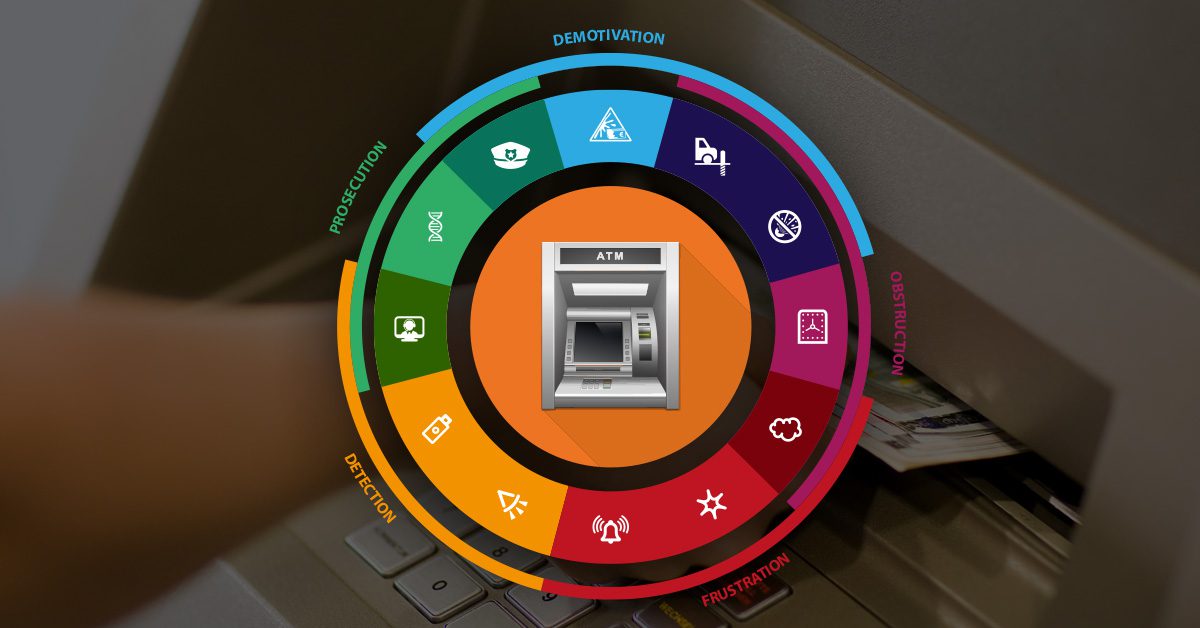ATM Security as an integral concept
Although removing the expectation of a reward by cash degradation is deemed the most effective preventive measure, this is definitely not the only thing that needs to be done to counteract physical attacks on ATMs. Additionally, measures are required that increase the risk for criminals and measures that deter and hinder them in their attack.
Rather than having different manufacturers trying their best to come up with just a piece of the puzzle that is ATM Security, we see the need for a total, integral concept. Irreversibly degrading the cash inside the ATM (no cash, no crime) is a great starting point, but we can do more to discourage criminals to physically attack ATMs.
Increase the chance of getting caught
The biggest risk a criminal faces is getting caught and heavily penalized. To increase the chance that criminals get caught, it’s necessary to detect an attack as early as possible. Catching them in the act is almost impossible; the attack doesn’t last long enough – 2 minutes on average. But there are some measures that have been proven to be successful. For instance, camera’s combined with microphones and lighting surrounding the ATM. If these are positioned intelligently (effective and inaccessible for the criminal), there will at least be decent footage of the crime. If the camera surveillance is also integrated with the ATM software, this will provide valuable intelligence. For example: if someone is lingering in front of the ATM and doesn’t start a transaction, this can be detected by Video Content Analysis and generate a Pre-Incident Indicator alert for a control room operator. Also, DNA markers are a good addition to the cash degradation solution. This will allow the police to link recovered banknotes to criminals and in turn, link them to a specific crime.
Discouragement
To discourage a criminal from committing an attack, several measures are conceivable. Like placing anti-ram bollards/barriers, anchoring the ATM to the floor or placing fog generators and/or strobes. These last measures obviously only work indoors and completely disorient the criminals in their attempted attack.
Harsh sentencing
The harsher the sentence, the more the criminal is discouraged. At this time, the classification (and subsequently the sentencing) of a physical attack on an ATM differs per country. Some countries (including The Netherlands) see it as an ‘attempted burglary’, while other countries classify it as ‘attempted manslaughter’ and in case of an explosion even as a ‘terrorist act’ (United States). Obviously, light sentencing (short jail time), isn’t nearly as discouraging as harsher sentencing. In practice, organized criminals generally become active again immediately after they do short jail time.
Future steps: detect the preparations
It would be even more effective if we could detect the preparations of an attack (like theft of a vehicle, combined with the purchase of explosives or gas). However, this requires an intense collaboration and exchange of information between stakeholders: from police and the Justice departments to banks, security companies and ATM manufacturers/suppliers. Preferably internationally… Unfortunately, these forms of cooperation and exchange of information are still quite rare…


